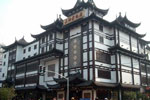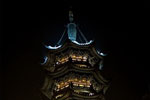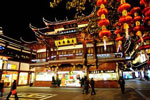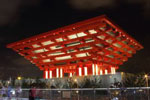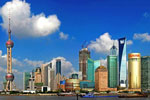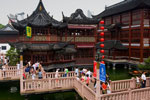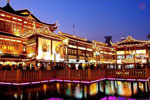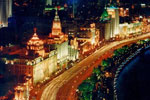Shanghai (上海市)
Wikipedia |
City Information |
Travel Guide |
Google Maps |
Subway Map
![]() |
City Map
|
City Map
![]()
Shanghai sits on the Yangtze River Delta on China's eastern coast, and is roughly equidistant from Beijing and Hong Kong. The municipality as a whole consists of a peninsula between the Yangtze and Hangzhou Bay, mainland China's second-largest island Chongming, and a number of smaller islands. It is bordered on the north and west by Jiangsu, on the south by Zhejiang, and on the east by the East China Sea. The city proper is bisected by the Huangpu River, a tributary of the Yangtze. The historic centre of the city, the Puxi area, is located on the western side of the Huangpu, while the newly developed Pudong, containing the central financial district Lujiazui, was developed on the eastern bank.
Shanghai has a rich collection of buildings and structures of various architectural styles. The Bund, located by the bank of the Huangpu River, contains a rich collection of early 20th-century architecture, ranging in style from the neoclassical HSBC Building to the art deco Sassoon House. A number of areas in the former foreign concessions are also well-preserved, the most notable ones being the French Concession.
One uniquely Shanghainese cultural element is the shikumen (石库门) residence, a two- or three-story townhouse, with the front yard protected by a high brick wall. Each residence is connected and arranged in straight alleys, known as a longtang (弄堂), pronounced longdang in Shanghainese.
Shanghai has a number of places of interest, such as Yu Garden, City God Temple, The Bund, Former French Concession, Lujiazui and the Expo Park. Yu Garden is one of China's most famous classical gardens, known for its exquisite beauty and magnificent halls, and is within the City God Temple tourist area.




